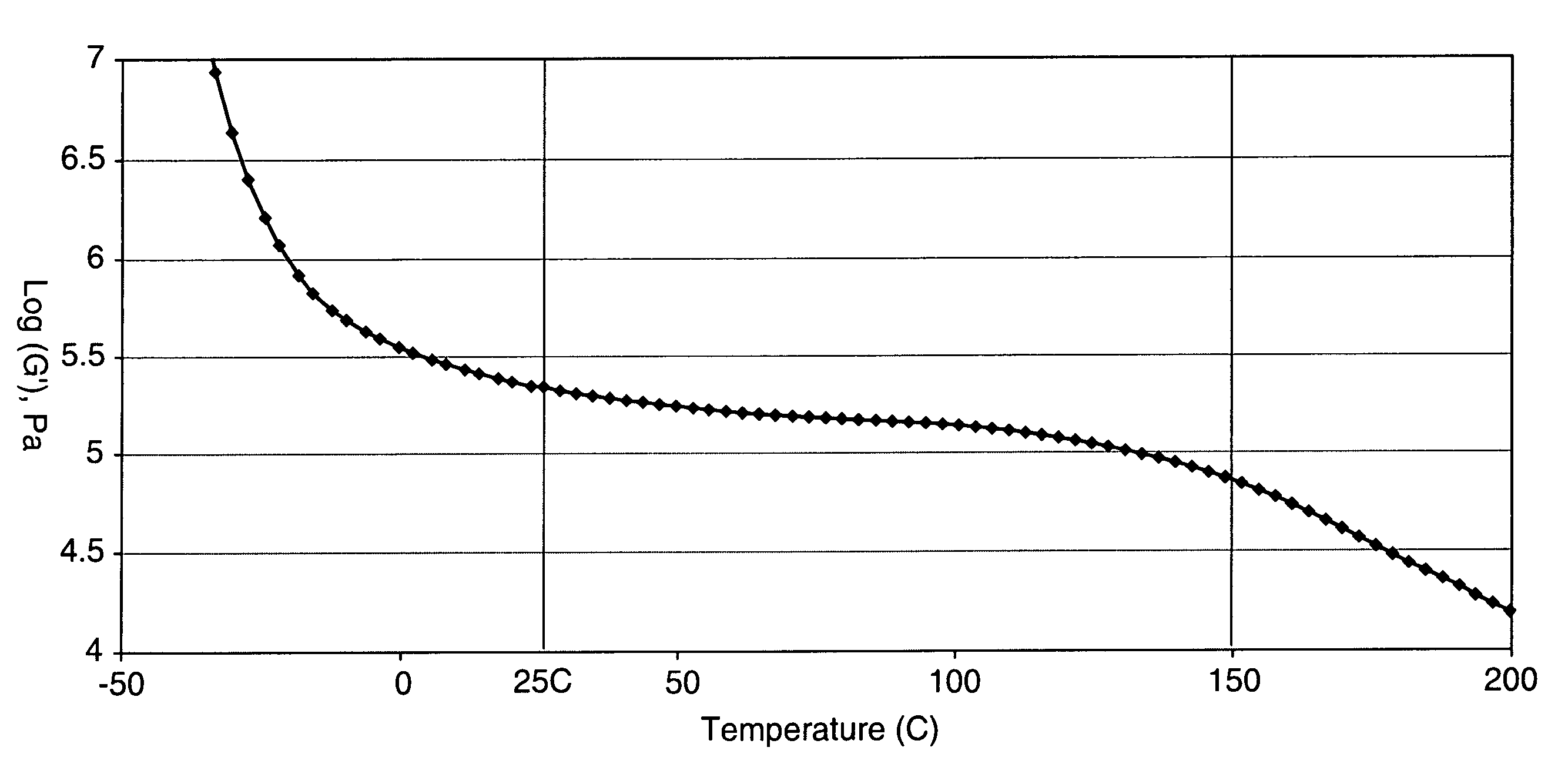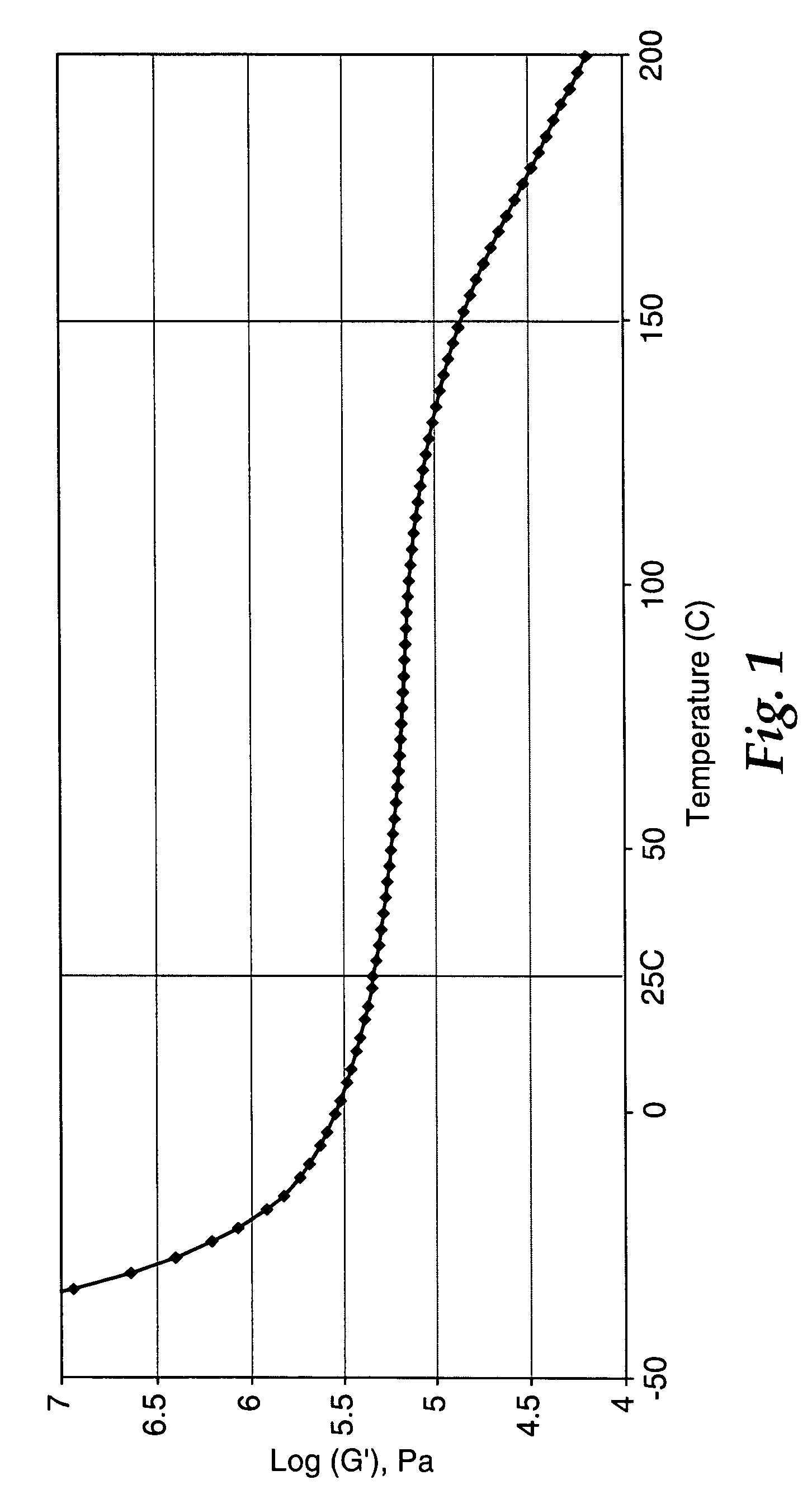(Meth)acrylate block copolymer pressure sensitive adhesives
a technology of acrylate block and copolymer, which is applied in the direction of film/foil adhesives, instruments, other domestic objects, etc., can solve the problems of affecting the stability, clarity, bond strength, and combination thereof of some known pressure sensitive adhesives, and affecting the use of some optical films or other substrates. , to achieve the effect of weakening the adhesive bond between
- Summary
- Abstract
- Description
- Claims
- Application Information
AI Technical Summary
Benefits of technology
Problems solved by technology
Method used
Image
Examples
examples
[0114]These examples are merely for illustrative purposes only and are not meant to be limiting on the scope of the appended claims. All parts, percentages, ratios, etc. in the examples and the rest of the specification are by weight, unless noted otherwise. Solvents and other reagents used were obtained from Aldrich Chemical Company; Milwaukee, Wis. unless otherwise noted.
Test Methods
Accelerated Aging Test
[0115]Several different protocols have been used for testing the aging properties of coated laminate structures. One protocol was carried out by placing the laminate in a 90° C. oven for 1 week and is called the “90° C. test”. Another was carried out by placing the laminate in an oven with controlled humidity at 80° C., 90% relative humidity for 1 week and is called the “80° C. / 90% RH test”. The result of these testing protocols is determined by visual observation. The data are reported as either “Pass” if the sample retains its optical clarity, “Marginal” if bubbles are present b...
synthesis examples
[0118]The (meth)acrylate block copolymer pressure sensitive adhesives (PSAs) included in the articles of this invention were made using the living, controlled polymerization technique, atom transfer polymerization (ATRP). The following shorthand is used to describe the polymers formed. For example an ABA triblock copolymer of polymethylmethacrylate and polybutylacrylate with A blocks of about 10,000 theoretical molecular weight and B block of about 60,000 theoretical molecular weight will be written as: pMMA-b-pBA-b-pMMA 10K-60K-10K. Theoretical molecular weights were varied by controlling the amounts of monomer relative to initiator. Actual molecular weights are determined by gel permeation chromatography in tetrahydrofuran solutions using polystyrene standards. Typically, the weight average molecular weight Mw is used to compare the actual molecular weight against the theoretical value.
synthesis example 1
pMMA-b-pBA-b-pMMA 10K-60K-10K
Step 1: Preparation of a 60K pBA Midblock Macroinitiator:
[0119]A mixture of CuBr (0.00478 grams), 1,4-dibromoadipate (0.06 grams), BA (10.0 grams), anisole (0.5 grams), hexadecane (0.5 milliliters), and tris[2-(dimethylamino)ethyl]amine (9.0 microliters) was placed in a glass reaction vessel. The mixture was covered with a nitrogen atmosphere, agitated with a magnetic stirring rod, and heated to 60° C. for 20 hours. The % monomer conversion (i.e., the amount of BA remaining was determined) was measured by Gas Chromatography and found to be about 100%. Gel Permeation Chromatography (GPC) analysis confirmed the molecular weight of about 60,000 Daltons.
Step 2: End Capping of Midblock with 10K pMMA Hardblock:
[0120]Under a nitrogen atmosphere, the midblock macroinitiator prepared in Step 1 was dissolved in about 10 mL of n-butylacetate to make a homogeneous solution. A solution containing catalyst (0.0396 grams of CuCl complexed by 108.8 microliters of 1,1,4,...
PUM
| Property | Measurement | Unit |
|---|---|---|
| Tg | aaaaa | aaaaa |
| Tg | aaaaa | aaaaa |
| size | aaaaa | aaaaa |
Abstract
Description
Claims
Application Information
 Login to View More
Login to View More - R&D
- Intellectual Property
- Life Sciences
- Materials
- Tech Scout
- Unparalleled Data Quality
- Higher Quality Content
- 60% Fewer Hallucinations
Browse by: Latest US Patents, China's latest patents, Technical Efficacy Thesaurus, Application Domain, Technology Topic, Popular Technical Reports.
© 2025 PatSnap. All rights reserved.Legal|Privacy policy|Modern Slavery Act Transparency Statement|Sitemap|About US| Contact US: help@patsnap.com



